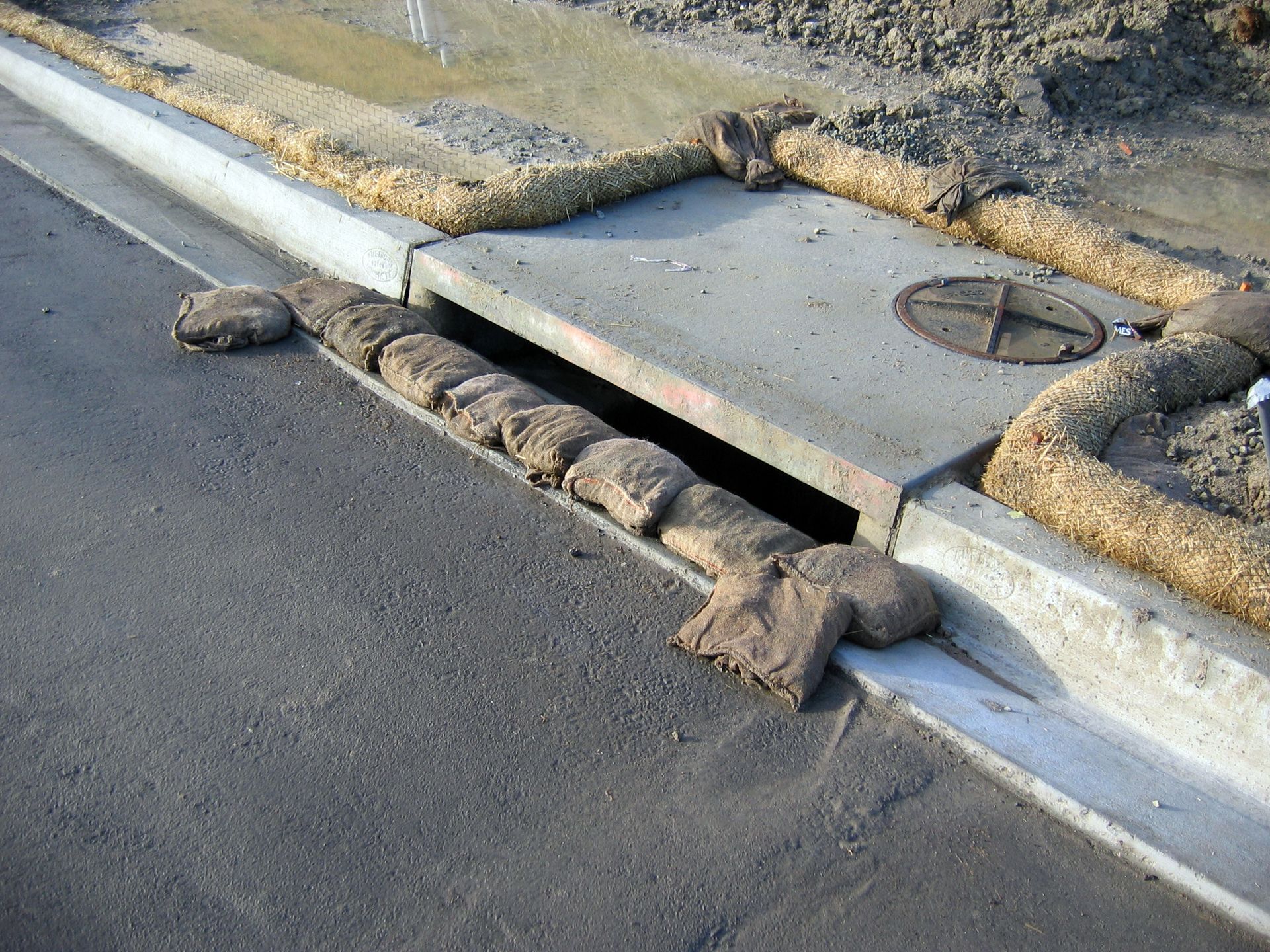Storm drain inlet protection is a major part of any SWPPP, especially in urban areas where impervious surfaces can lead to excess pollution.
Investing in storm drain inlet protection is an essential last line of defense to protect local ecosystems from pollution and damage.
Based on their topography and budget, contractors can choose among a variety of inlet protection options best suited for filtering out harsh or heavy contaminants.
This guide will help construction site operators understand the importance of inlet protection barriers for stormwater management and decide how to implement controls into their SWPPP best.
The Importance of Inlet Protection for Storm Drains
Every storm drain is piped to a nearby pond, stream, or river, leaving these water systems vulnerable to any pollutants that collect in storm drains.
Since construction sites generate many debris, sediment, and toxic chemicals, it’s crucial to protect storm drains and other discharge points from these pollutants using natural and mechanical controls.
Most inlet control barriers are designed to trap heavy contaminants, such as sediment or oil before they flow into a storm drain. This allows site operators to filter out toxins and dispose of them properly.
In addition to filtering out heavy pollutants, inlet barriers prevent clogging, which can lead to flooding and local property damage.
It’s important to note that many inlet protection controls are not strong enough to filter out pollutants independently and often require additional BMPs on the site to maximize their effectiveness.
Common Construction Site Pollutants that Threaten Storm Drains
Construction sites are incredibly intrusive to the local environment, eroding the ground and kicking up sediment that mixes with stormwater. Unfortunately, sediment buildup increases turbidity, which is life-threatening to many aquatic species.
Perhaps more dangerous, though, are the chemicals and pollutants commonly found in construction zones, which could be extremely hazardous if carried off after a storm or flooding.
Beyond simple trash and litter, construction zones are harbingers for many toxic chemicals, including:
- Petroleum products
- Automotive fluids
- Pesticides
- Fertilizers
- Concrete
- Stucco
- Brick
- Paint
These chemicals threaten not only aquatic life but also the drinking water of local communities. A small storm drain inlet protection investment can avoid a complete environmental catastrophe.
Types of Storm Drain Inlet Protection Barriers
Several types of inlet protection barriers are designed to capture and filter out pollutants while allowing water to flow freely into storm drains.
These controls are merely temporary and allow for easy soil stabilization once construction activity has ceased. Some common types of inlet protection barriers include:
- Filter Socks: Filter socks are mesh tubes filled with sediment-filtering material, such as wood chips or compost, placed around storm drain inlets to capture sediment and pollutants.
- Gravel Bags: Gravel bags are fabric sacks filled with gravel or stone and placed around storm drain inlets to filter out sediment and debris while allowing water to pass through.
- Inlet Filters: Inlet filters are devices installed directly into storm drain inlets to capture sediment, trash, and debris before they enter the drainage system. These filters typically consist of screens, baskets, or inserts that can be easily removed and cleaned.
- Floating Inlet Barriers: Floating inlet barriers are deployed in water bodies to protect storm drain inlets from floating debris, oil, and other pollutants. These barriers typically consist of a buoyant frame with an impermeable skirt that hangs below the water surface, preventing contaminants from entering the inlet.
Using Additional BMPs to Assist Inlet Protection
Stormwater BMPs complement inlet protection measures by enhancing their effectiveness. For example, silt fencing is a standard stormwater BMP placed around the perimeter of all construction zones to prevent sediment-laden water from escaping and ending up in storm drains.
Depending on your construction zone’s location and topography, additional controls, such as rain gardens, permeable pavement, or bioretention basins, help absorb excess water runoff.
Vegetated buffer strips, wattles, and rock check dams may be placed around these controls to protect them further.
Of course, regular maintenance and inspection are vital to the success of all BMPs.
Should I Be Concerned About Ponding?
Ponding, or water accumulation around storm drain inlets, can occur during heavy rainfall and is usually no cause for concern.
However, if not addressed promptly, excess ponding due to clogged drain inlets can lead to localized flooding, property damage, and safety hazards.
Regular maintenance of inlet protection barriers, including removal of accumulated sediment and debris, is essential for preventing ponding and ensuring proper drainage.
Storm drain inlet protection is a simple but essential part of any stormwater management plan. Contact an environmental consultant for help installing stormwater BMPs and designing inlet protection barriers.
FAQs: Storm Drain Inlet Protection
What are the consequences of failing to implement inlet protection measures?
Failing to implement inlet protection measures can result in pollution of waterways, habitat degradation, flooding, property damage, and regulatory non-compliance, leading to fines and penalties.
Are inlet protection measures required by regulations?
Local, state, and federal regulations often require inlet protection measures, particularly for construction sites that require a SWPPP.
How often should inlet protection barriers be inspected and maintained?
Inlet protection barriers should be inspected and maintained regularly, ideally after each rainfall event and at least once a week during active construction or periods of heavy runoff. Prompt removal of sediment and debris is essential for preventing clogging and ensuring proper function.
Can inlet protection measures be customized for specific site conditions?
Yes, inlet protection measures can be customized based on site-specific conditions, such as slope, soil type, drainage patterns, and pollutant sources. Consulting with a qualified stormwater management professional can help determine your site’s most appropriate inlet protection solutions.

